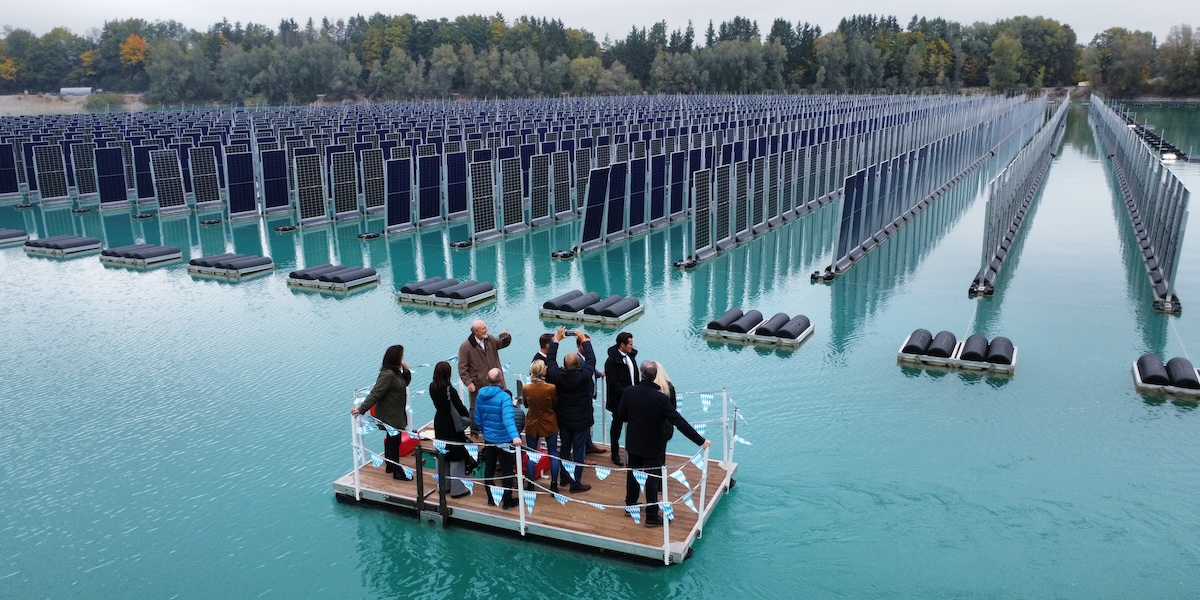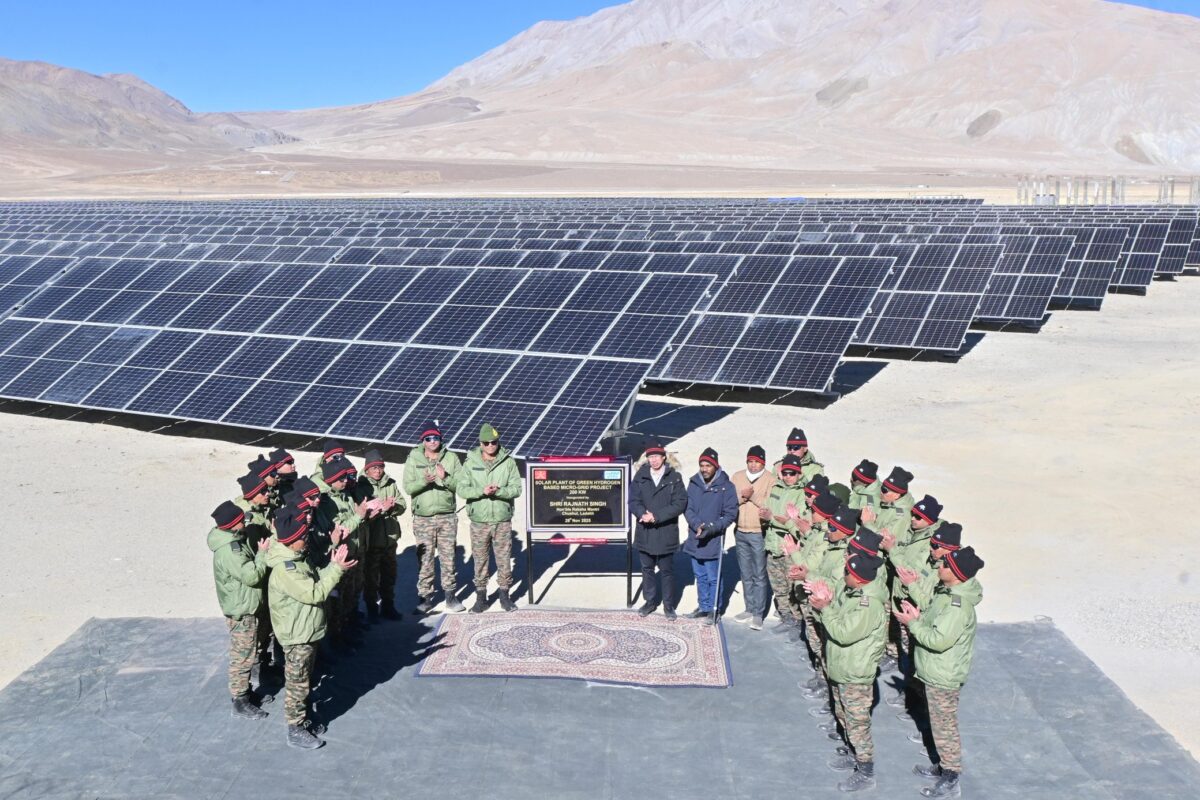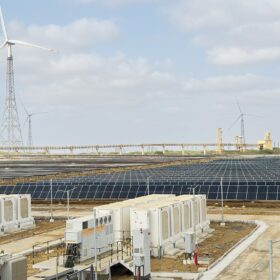From pv magazine Germany
German developer Sinn Power has announced the completion of what it claims to be the world’s largest floating photovoltaic plant featuring vertically oriented solar panels.
The company said its SKipp-Float system offers notable advantages in terms of storm resistance. The mounting structure is designed so the modules can deflect under wind load via a cable system, minimizing wind resistance while also providing significant stability against wave motion.
The system became operational on August 21 at a gravel pit lake in Gilching, Bavaria, in southern Germany, and was officially inaugurated last Friday. Bavaria’s Minister-President Markus Söder was among the keynote speakers. The groundbreaking ceremony in November, when around 50 modules had already been installed, had already drawn high-profile visitors, including Minister of Economic Affairs Hubert Aiwanger. Sinn Power first announced the project in April of last year.
Despite the relatively long implementation phase, unplanned delays were reportedly minimal. Gottfried Jais, Managing Director of Kies- und Quetschwerk Jais GmbH & Co. KG, the project partner that owns the quarry lake and uses the generated electricity for its operations, expressed gratitude for the speedy approval process during the inauguration.
According to yield forecasts, the gravel pit can cut its grid electricity purchases by up to 70%, with any surplus electricity fed into the public grid.
The solar modules are arranged vertically in an east-west orientation with a 4-meter row spacing. Each SKipp-Float unit requires only a narrow, keel-like base extending approximately 1.6 meters underwater, which the company says ensures a small footprint.
Exact figures were not provided in Sinn Power’s press release, and the Federal Network Agency’s market data register contains no entry for the site. According to Sinn Power, the floating array occupies just 4.65% of the lake’s surface, well below the 15% maximum allowed under Germany’s Water Resources Act. Plans are already underway for a second expansion phase, which would add another 1.7 MW to the site.
Beyond its low land use, Sinn Power highlights additional ecological benefits. The system’s design improves oxygen exchange, allows sunlight to reach the water surface, and promotes natural circulation of the water layers.
The company also noted that buoys installed before construction indicate that water quality has tended to improve since commissioning. Nesting waterfowl have been observed on the floats, and schools of fish have gathered near the keel-like reset weights.
These reset weights primarily serve a stabilizing function: if the modules tilt under wind or wave stress, the weights ensure they return to an upright position. Sinn Power reports that the technical reliability of the patented system has been confirmed in the first weeks of operation.
The company sees potential applications for its system in any year-round artificial water body with a depth of 1.6 meters or more—particularly gravel pits and quarry lakes that fall under the 15% area rule of the German Federal Water Resources Act. Target users include companies with high electricity demand or planned electrification strategies.
Like other providers of vertically arranged PV systems, Sinn Power emphasizes the favorable generation profile for both self-consumption and electricity marketing in the grid.
This content is protected by copyright and may not be reused. If you want to cooperate with us and would like to reuse some of our content, please contact: editors@pv-magazine.com.








By submitting this form you agree to pv magazine using your data for the purposes of publishing your comment.
Your personal data will only be disclosed or otherwise transmitted to third parties for the purposes of spam filtering or if this is necessary for technical maintenance of the website. Any other transfer to third parties will not take place unless this is justified on the basis of applicable data protection regulations or if pv magazine is legally obliged to do so.
You may revoke this consent at any time with effect for the future, in which case your personal data will be deleted immediately. Otherwise, your data will be deleted if pv magazine has processed your request or the purpose of data storage is fulfilled.
Further information on data privacy can be found in our Data Protection Policy.